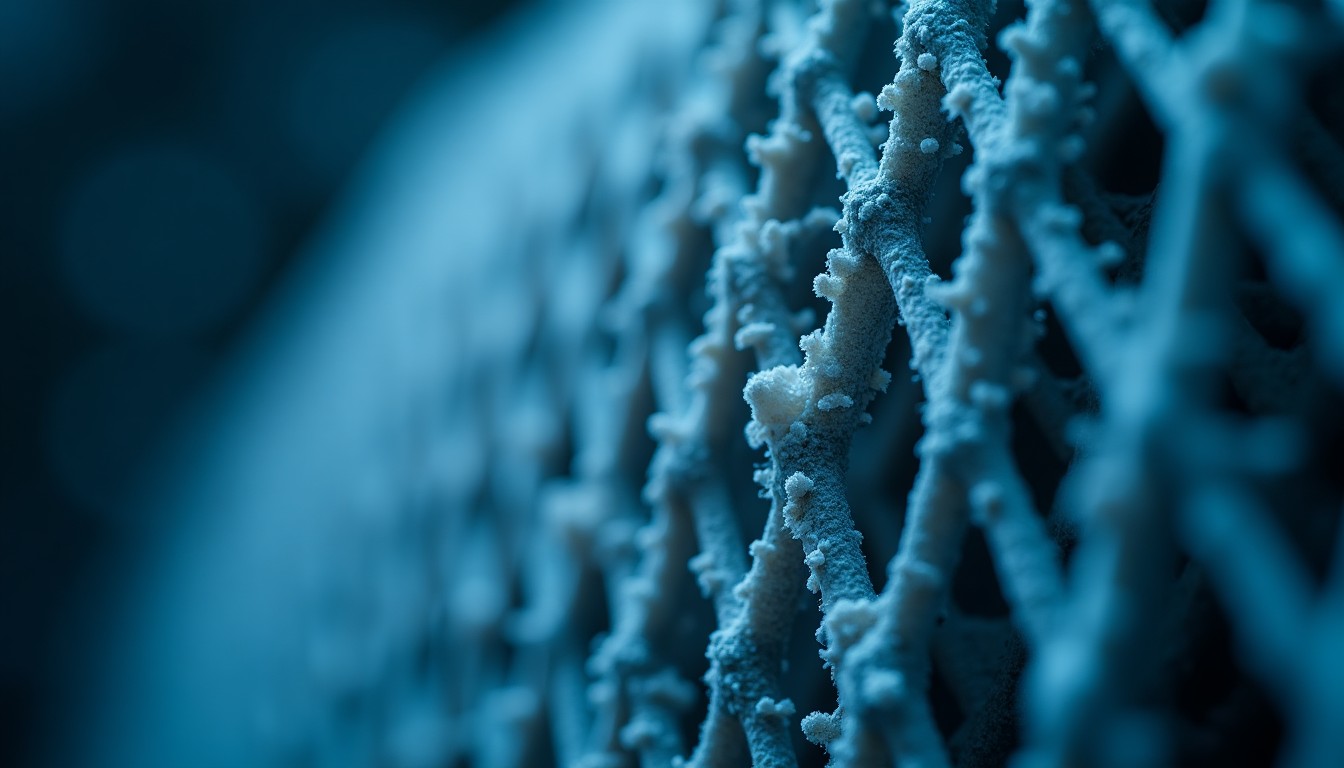When your air conditioning system isn’t blowing cold air, it can be a source of considerable discomfort, especially during the hot summer months. Several potential factors can play a role in this common dilemma, leading to a need for AC repair. Understanding these common causes of AC failure can help home and business owners address and prevent cooling issues before they escalate into more significant problems.
One of the primary culprits of AC failure is an electrical issue. This includes problems such as blown fuses, tripped circuit breakers, or faulty wiring. Without the correct electrical current, the components of your air conditioning system cannot operate efficiently, leading to insufficient cooling or no cold air at all.
Another frequent source of failure is the compressor, often referred to as the heart of the air conditioning system. The compressor’s role is to circulate refrigerant necessary for heat exchange through the coils of the system and add pressure to the refrigerant, which in turn leads to the cooling function of the system. If the compressor fails or operates inefficiently, it can disrupt the entire cooling process, leading to a situation where the AC might run, but not cool adequately.
Dirt and debris buildup is another factor that can severely impact the performance of your AC unit. Over time, dust and other particles can accumulate on coils and obstruct airflow, significantly decreasing your system’s efficiency. This buildup can cause your AC to work harder, eventually leading to failure due to overheating or stress on various components.
Here is a quick comparison of the common causes and their impact:
| Cause | Impact on AC |
| Electrical Issues | System fails to start or operate efficiently |
| Compressor Problems | No refrigerant flow; leads to cooling failure |
| Dirt & Debris Buildup | Reduced efficiency and potential overheating |
These issues are prevalent but manageable with regular maintenance and early detection. Home and business owners should ensure their systems are regularly inspected by a professional to avoid extensive repairs and to keep their air conditioning running smoothly. By staying mindful of these common problems, you can better prepare and prevent the discomfort and inconvenience of an underperforming AC unit.
Thermostat settings and functionality
Your air conditioning system’s effectiveness can often be impacted by the settings and functionality of the thermostat. The thermostat acts as the command center for the system, and when it malfunctions or is improperly set, it can lead to issues where the AC appears to run but doesn’t blow cold air. Addressing thermostat-related problems can often resolve your cooling issues without the need for complex AC repair.
Follow these steps to ensure that your thermostat is functioning properly and is appropriately set:
- Check the Mode: Ensure the thermostat is set to ‘cool’ mode. It’s surprisingly common for thermostats to remain on ‘heat’ or ‘off’, especially after the winter season. Double-check the mode before moving to more complex troubleshooting steps.
- Adjust the Temperature: Set the thermostat to a few degrees cooler than the current room temperature. Pay attention to see if the air conditioning unit responds by kicking on and blowing cold air. This simple adjustment can sometimes correct the issue if the problem was a minor discrepancy in the settings.
- Inspect the Thermostat’s Power Supply: If the thermostat is blank or unresponsive, check if it’s powered properly. Battery-operated thermostats might just need fresh batteries. For wired units, ensure there is no issue with an electrical connection or wiring fault that could impede functionality.
- Sensor Placement: The thermostat sensor, which detects room temperature, should not be placed in direct sunlight, near windows, or close to heat-producing appliances. Any of these conditions can cause the thermostat to misread the ambient temperature, resulting in it not cooling as needed.
- Calibrate for Accuracy: Over time, thermostats may become less accurate. You can perform simple calibration checks or consult the manual for calibration instructions. If you suspect a malfunction, it may be worthwhile to contact a professional to recalibrate or replace the unit.
- Upgrade if Necessary: Older thermostats tend to be less precise and may lack functionality that enhances efficiency and cooling performance. Consider upgrading to a new digital or smart thermostat for better control, accuracy, and features such as programmability or remote operation via a smartphone app.
- Professional Assessment: If the thermostat adjustments do not resolve the cooling issue, it might be worthwhile to consult a professional. They can provide a comprehensive assessment of both the thermostat and the air conditioning system to identify any hidden concerns.
By ensuring your thermostat is set correctly and functioning well, you can improve your AC’s efficiency, potentially reducing the need for more extensive AC repair services. Regularly checking and maintaining the thermostat is a simple step that can prevent future cooling issues while ensuring comfort in your home or business.
Air filter issues and maintenance
A crucial aspect of maintaining an efficient air conditioning system is ensuring the air filters are in good condition. Air filters play an essential role in the overall performance of your AC by trapping dust, pollen, pet dander, and other airborne particles. When these filters become clogged, they can significantly impede airflow through the system, making it difficult for your AC to blow cold air, potentially leading to more substantial cooling issues.
Cleaning or replacing your air filters regularly offers several advantages. Firstly, a clean filter helps your air conditioning unit run more efficiently by allowing it to operate without obstruction. This not only extends the life of your AC unit but also improves its ability to maintain a consistent indoor temperature, reducing the strain on the system. Moreover, an efficient system uses less energy, which translates to lower utility bills and environmentally friendly operation.
Regular air filter maintenance also contributes to better indoor air quality. Clean filters effectively capture allergens and pollutants, preventing them from circulating through your living or working space. This is especially important for individuals with allergies or respiratory conditions, as cleaner air can help alleviate symptoms and promote a healthier environment.
To ensure optimal performance of your air conditioning system, consider these steps for air filter maintenance:
1. Frequency of Replacement: The frequency with which you should change your air filters depends on several factors, including the type of filter you use (HEPA, fiberglass, pleated, etc.), the environment in which you live (dusty, pollen-heavy, etc.), and whether anyone in the home has allergies. Generally, it’s wise to inspect them monthly and replace them every 1-3 months.
2. Filter Compatibility and Quality: It’s essential to use the correct type and size of filter recommended by your AC manufacturer. Higher MERV (Minimum Efficiency Reporting Value) rated filters are more effective at capturing small particles but may also restrict airflow if your system isn’t designed to accommodate them.
3. Monitoring and Alerts: Many modern air conditioning systems come with indicators or smart thermostats that alert you when it’s time to replace the filter. Leveraging this technology can simplify maintenance and ensure that air filters are changed promptly.
4. DIY Cleaning: While some filters are disposable, others are designed to be reusable. If you have a reusable filter, clean it thoroughly by rinsing it with water and allowing it to dry completely before reinserting it into the unit.
Regular attention to air filter maintenance not only prevents potentially costly AC repair but also ensures that your air conditioning system performs effectively, keeping your space comfortable even during the most sweltering days. By prioritizing air filter care, you can enjoy the peace of mind that comes with a reliably cool and pleasant indoor environment.
Refrigerant levels and leaks
When it comes to cooling issues with your air conditioning system, refrigerant plays a pivotal role in its ability to blow cold air. Essentially, refrigerant absorbs heat from the indoor air and releases it outside, thereby cooling your living space. However, inadequate refrigerant levels or leaks can disrupt this process, hindering the system’s cooling efficiency and leading to a need for AC repair.
Low refrigerant levels are often a key indicator of a leak within the AC system. Refrigerant doesn’t deplete naturally over time, so if levels are low, it’s almost always due to a leak. This can result from various factors such as wear and tear, corrosion in the coils, or damage from debris. When leaks occur, not only does the cooling capacity of the AC diminish, but it can also cause the compressor to work harder than necessary, leading to eventual failure.
Detecting a refrigerant leak isn’t always straightforward, but there are a few telltale signs to keep an eye on. One of the most common indicators is that your AC is blowing warm or lukewarm air instead of cold. Additionally, you might notice ice or frost buildup on the refrigerant lines or evaporator coils. Unusual hissing or bubbling noises emanating from the system can also indicate a refrigerant leak.
To address these issues, it’s crucial to contact a professional HVAC technician rather than attempting a DIY fix. Handling refrigerant requires specialized knowledge and equipment due to the potential hazards involved, as well as environmental regulations that restrict DIY recharges. A qualified technician can safely repair leaks, recharge the refrigerant to the correct levels, and conduct a system test to ensure everything is functioning optimally.
Moreover, keeping your refrigerant levels in check can prevent further AC repair needs and help your system run more efficiently. A well-maintained refrigerant charge ensures that your air conditioning unit runs smoothly, reducing wear and tear on the compressor and promoting a comfortable indoor climate. Regularly scheduling professional inspections will also help catch any leaks early, allowing for timely repairs that can save energy and extend the lifespan of your unit.
Remember, consistently monitoring and addressing refrigerant levels is essential to avoid cooling issues that leave you hot under the collar. By reflecting on these proactive measures, you can maintain a well-running air conditioning system that effectively keeps your environment cool and comfortable.
Professional repair and service options
When your air conditioning system is facing persistent cooling issues and do-it-yourself solutions haven’t panned out, it’s time to consider professional repair and service options. Skilled HVAC technicians have the expertise and tools to diagnose complex problems that may not be immediately evident to the average homeowner. By leveraging their experience, they can provide a thorough evaluation of your AC unit, ensuring that all potential issues are addressed effectively.
A professional service visit typically begins with a complete system diagnostic. Technicians will start by examining key components such as the compressor, fan, and electrical connections to ensure they are functioning correctly. They will measure refrigerant levels and check for leaks, as refrigerant problems are a common cause of cooling inefficiencies that can lead to increased energy consumption and discomfort. If any leaks are detected, a certified technician will be able to correctly and safely repair them, preventing further depletion of refrigerant and potential damage to the system.
Furthermore, professionals can perform comprehensive cleanings of the system, including the removal of dirt and debris from coils and filters, which might be beyond the scope of typical at-home maintenance. These cleanups help restore optimal airflow and efficiency, significantly extending the lifespan of your air conditioning unit. Technicians are also adept at performing necessary calibrations and adjustments. For instance, they can ensure the thermostat is properly set and working accurately, which is crucial for maintaining desired indoor temperatures and reducing unnecessary strain on the unit.
In cases where components are beyond repair, HVAC professionals are equipped to suggest suitable replacements and handle installations. This can include anything from swapping out a faulty thermostat to replacing a worn-out compressor. Having these tasks handled by a professional assures that they are done in compliance with the latest industry standards and guidelines, thereby minimizing future risks and maximizing system reliability.
Engaging a professional for regular maintenance doesn’t just solve existing problems—it also serves as a preventative measure against future AC repair demands. Regular tune-ups can identify and rectify small issues before they escalate into more serious problems, maintaining your AC’s performance and efficiency. This preventative approach not only saves money in the long run by avoiding costly repairs but also ensures your home remains comfortable throughout the year.
In conclusion, addressing AC issues promptly through a combination of preventative measures and professional repair services is key to maintaining a reliable and efficient air conditioning system. By staying proactive in the upkeep of your unit, you can enjoy a consistently cool and comfortable environment, even during the hottest days, while extending the lifespan of your AC system and optimizing energy use.










